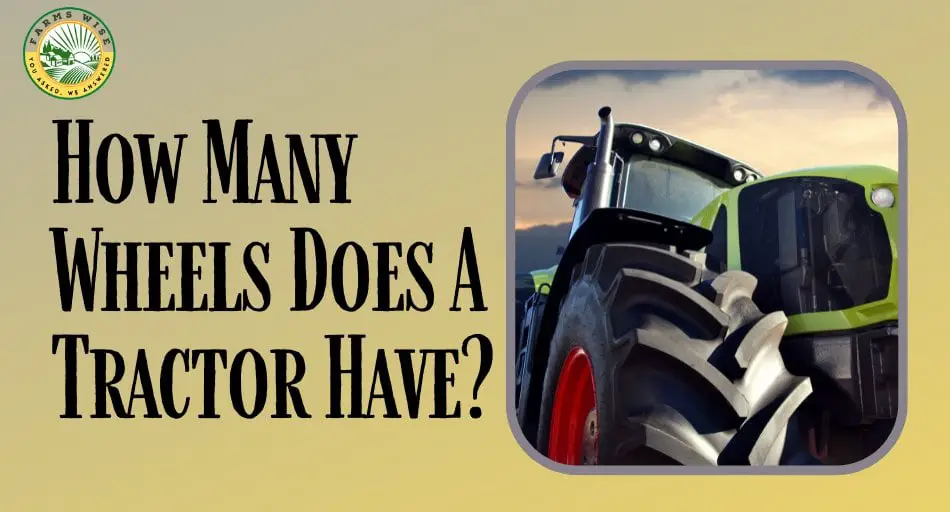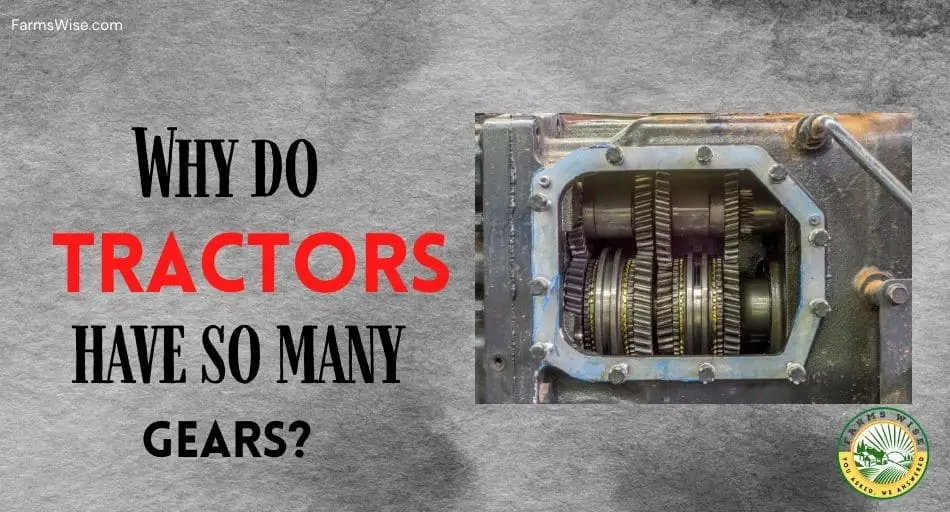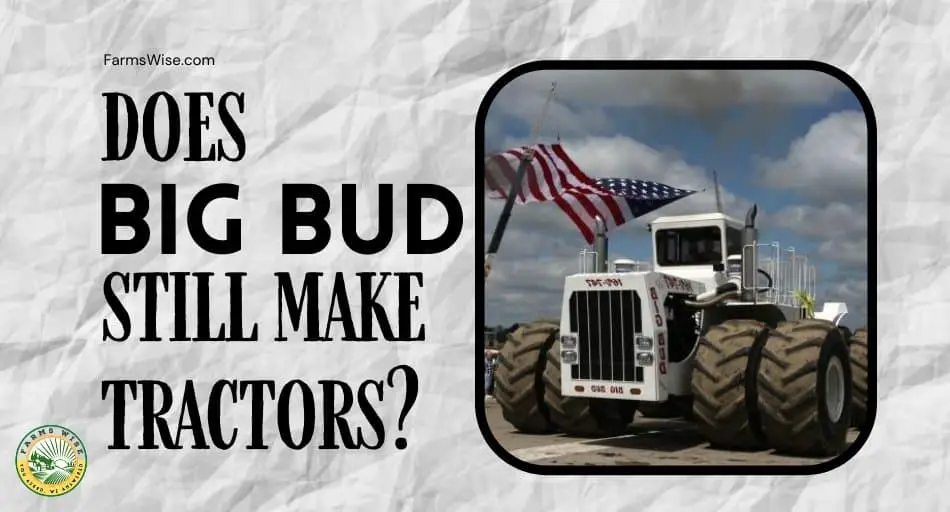A tractor is a large motor vehicle commonly used on a farm and in agriculture, but it can also be used for a wide variety of other tasks.
For example, it can pull a large trailer, help with hauling other equipment, and perform various agricultural tasks.
If you’ve ever taken a look at a tractor, you’ve definitely noticed that it has pretty large wheels and tires. These are beneficial for driving through harsh terrains, making the work much easier.
But with so many different types of tractors, you might be wondering: How many wheels does a tractor actually have?
How Many Wheels Does A Tractor Have?
Typically, a tractor has four wheels, but it strongly depends on the type and model. In fact, tractors may have two to three axles with up to eight wheels. The most common layout is two wheels at the front and two at the back.
On the other hand, large tractors designed to perform heavy-duty tasks might have more wheels, usually in the middle, for support and balance. Additional wheels also help offload the weight, making the tractor easier to steer.
So, if you’re in the market for a tractor and wonder which one you should choose, think about the tasks you want it to perform before purchasing any.
How many wheels does a standard tractor have?
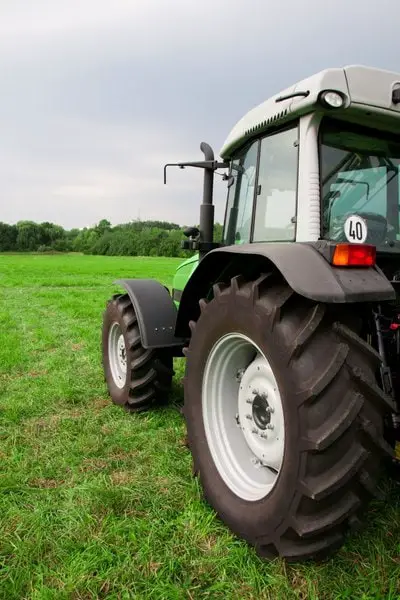
A traditional, typical tractor has four wheels – two at the front and two at the back. The most common tractors are called two-wheel, and rear-wheel drive.
This means that the back tires power the piece of machinery, and the front wheels simply roll.
If needed, additional machinery or equipment can be attached to the back. Some examples include a trailer, plowing machine, or harvester.
How many wheels does a heavy-duty tractor have?
Heavy-duty tractors that are meant to perform harder tasks might have six or even eight wheels. These tractors are also much larger than the standard two-wheel, rear-wheel tractors.
With that said, these types of tractors aren’t too common. The reason behind it is that they’re much harder to steer and use. They are also more expensive.
In addition, standard tractors with just four wheels can have attachments added, further increasing the wheel count and adding power. So, these are more versatile.
Can tractors have double wheels?
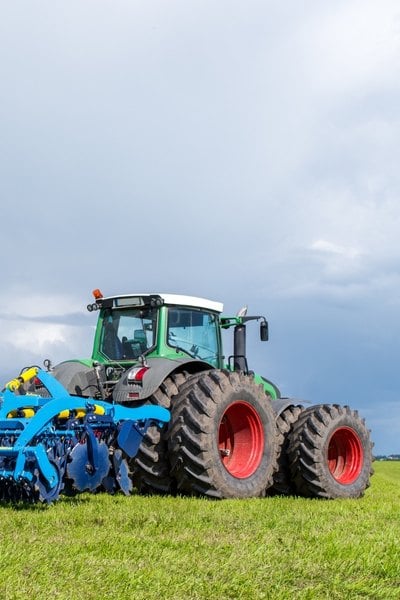
Some farm tractors, typically large, heavy-duty types, might have dual tires, often called duals. These wheels are located at the back. Sometimes, a tractor might even have triples – three wheels at the same place.
These wheels help offload the weight, allow the tractor to work on rough terrain, and make it more durable.
Unfortunately, tractors with dual or triple wheels at the back aren’t as suitable for pulling additional farm equipment as traditional two-wheel, rear-wheel tractors.
This is because they don’t have enough traction, which reduces their engine power.
As a result, these types of tractors aren’t as common in farming and agriculture.
Why are the tractor’s rear wheels bigger?

No matter what type of tractor you use, the rear wheels are always larger. This might make you wonder why. Luckily, the reason is quite simple.
Firstly, the large rear wheels are affixed to the driver’s cab at a higher elevation. This ensures good visibility from all sides, making the work easier.
In addition, all tractors are powered by rear wheels. This means that only the rear wheels move, while the front wheels simply roll. As a result, the rear wheels need to be larger to effectively push the tractor forward.
If the rear wheels were smaller, the tractor wouldn’t have as much power.
What’s more, the larger wheels at the back are also responsible for pulling other pieces of agricultural machineries, such as harvesters, plows, seeders, and harrows.
Because of that, these wheels need to have enough power and strength to pull these behind the tractor.
What exactly is the size of tractor wheels?
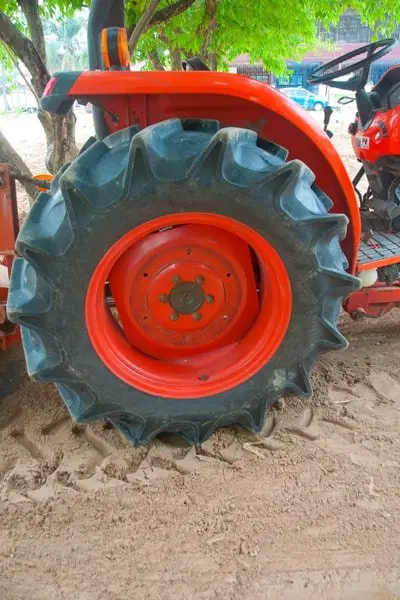
Since we’ve established that the rear tires of the tractor are bigger, you might be wondering what’s their exact size.
Unfortunately, there is not one specific answer when it comes to the size of tractor wheels. That’s because it depends on the model of the tractor, specific kinds of tires, and other factors.
Larger tires, both front, and back, are often used for larger, heavy-duty tractors. That’s because they can help pull more weight, which makes them suitable for more difficult tasks.
Smaller tires tend to be used for more compact tractors that don’t need that much power.
On top of that, some models of tractors allow the user to swap wheels for larger or smaller ones. This can be helpful if you’re using the same tractor for two different areas or farms.
So this also means that the wheel size will be different.
Do all tractor wheels have the same tires?

As you may have imagined, not all tractor wheels are equipped with the same tires. And that’s for various reasons.
First of all, the type of tires used for tractor wheels depends on where the tractor is being used.
For example, there are agricultural tractor tires, which are designed specifically to be used on soft surfaces, such as grass, mud, and soil.
There are also industrial tractor tires designated for use on hard surfaces like concrete and asphalt.
Almost all tractors can use both types of tires, but both the front and back wheels need to be equipped with the same type of tire to avoid damage to the wheels and the tractor itself.
Finally, there are also turf tractor tires, which are made specifically to be used on turf. These aren’t as popular as the first two kinds since they’re not typically used in agriculture.
Conclusion
Typically, farm tractors have four wheels – two smaller ones at the front and two larger ones at the back. This allows the tractor to be efficiently powered by the engines as well as pull other farming equipment at the back.
Still, there are some larger tractors with four wheels or more, but these aren’t as common. They’re also not as efficient as two-wheel, rear-wheel tractors, yet they are more expensive.
Sources: Research Gate, MDPI, Science Direct, and Market Research

Jack is the owner, chief editor, and senior writer of this website.
Machinery, engines, and farming have always been a passion of his since he was a young boy. Growing up on a small farm in rural America, he learned the value of hard work and dedication from an early age.
After completing his degree in Engineering, he decided to follow his dream and became a farmer in 2009.
Since then, he has gained a wealth of knowledge and experience in the field. He has grown a variety of crops, tended to farm animals, and worked with all sorts of farming machinery. Continue reading…

